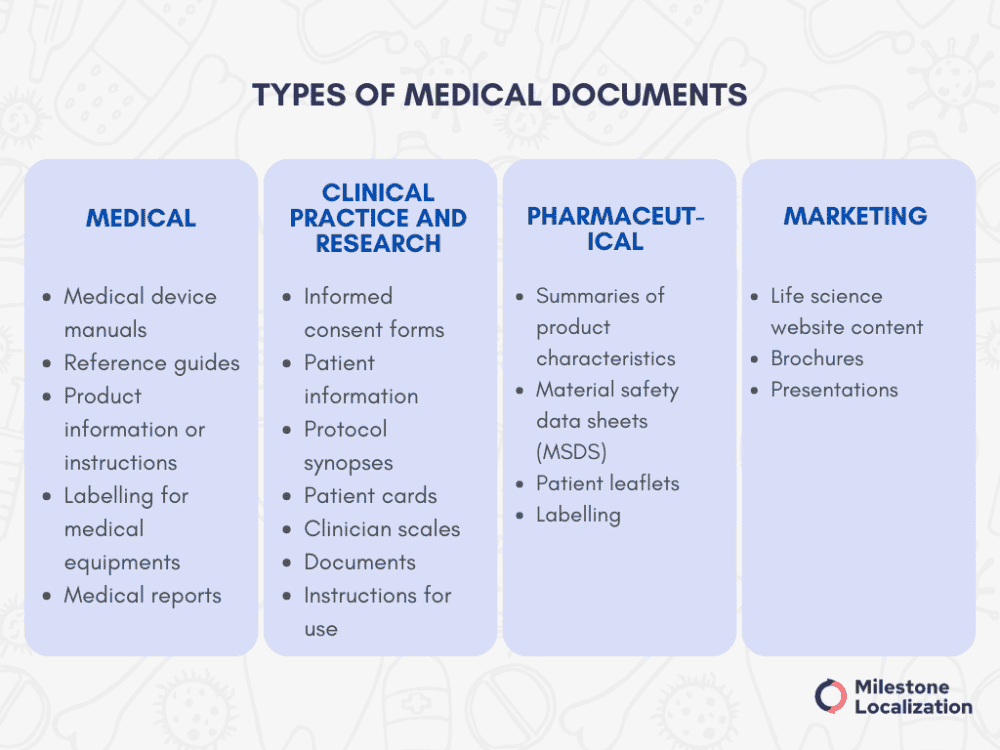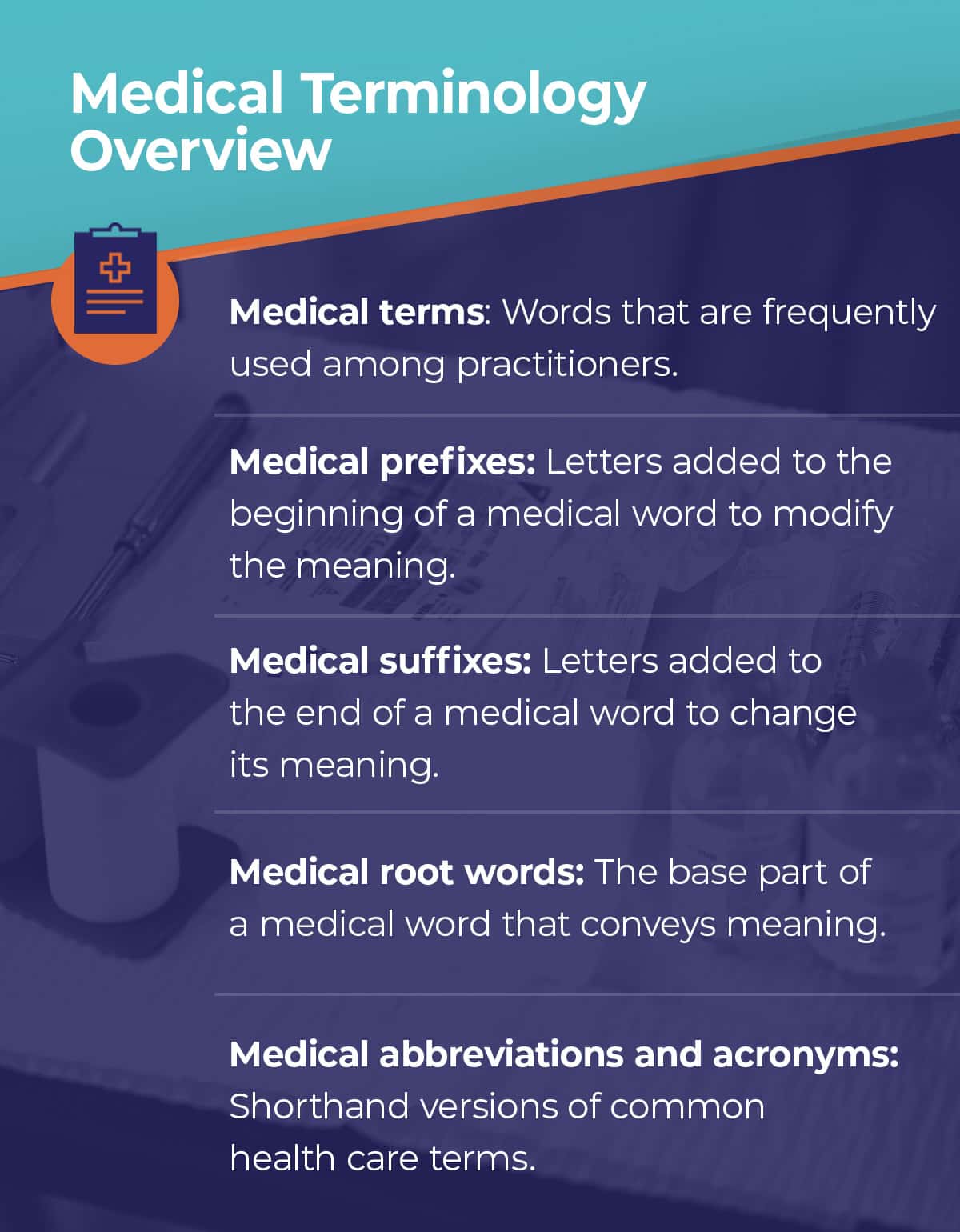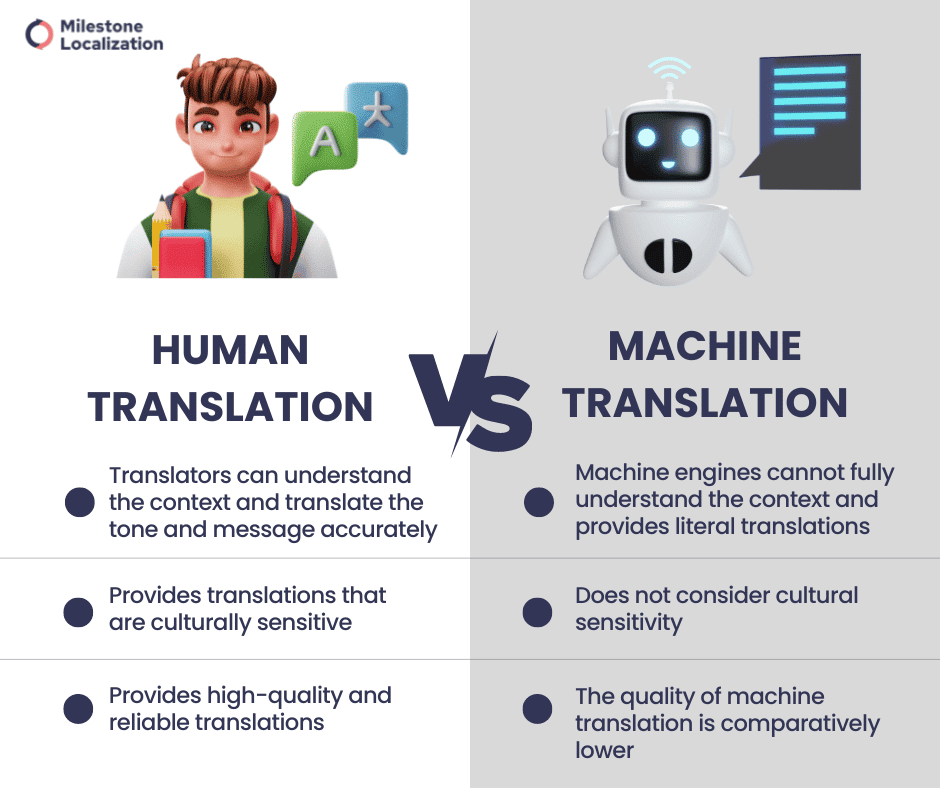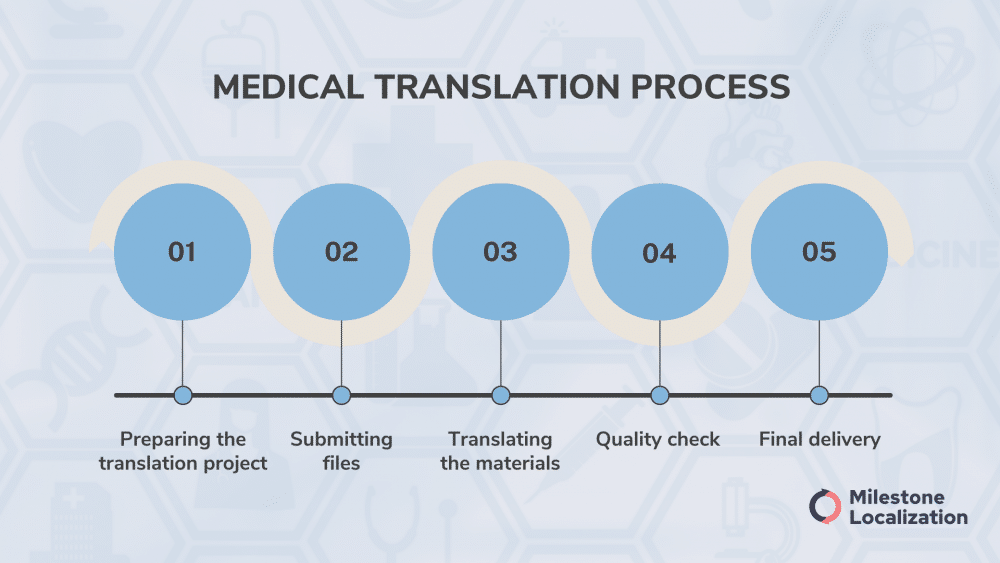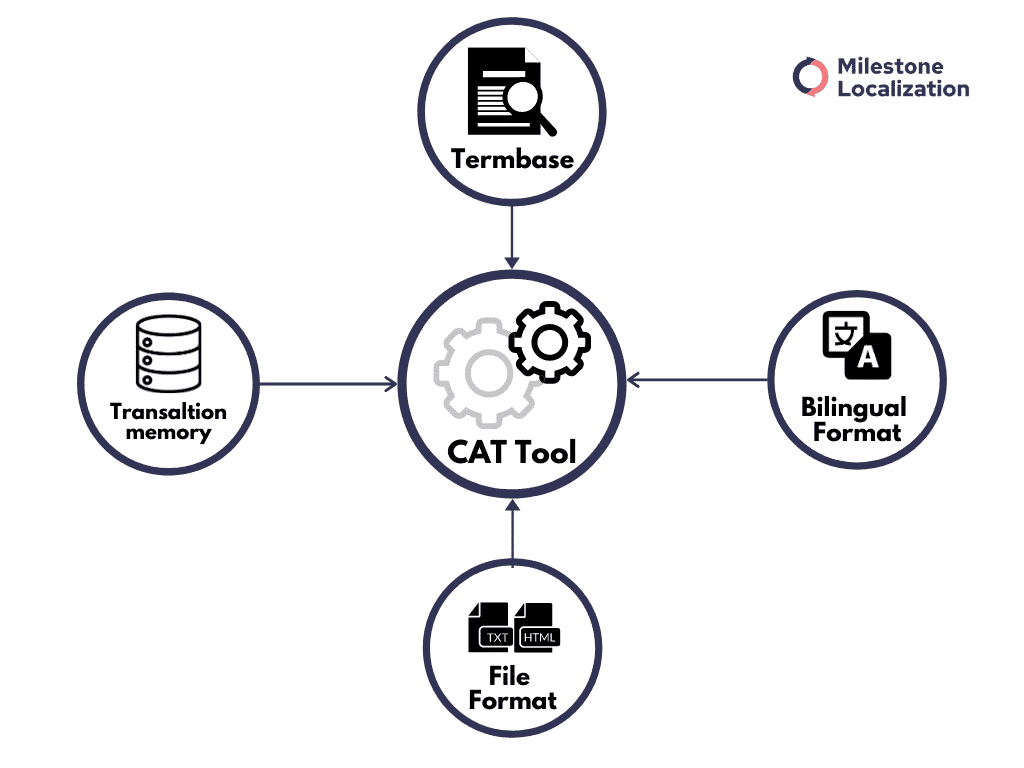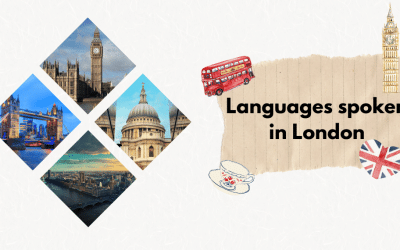Medical translation is a process, wherein materials related to the healthcare industry are translated from one language to another.
Medical translation is essential for making information available to speakers of different languages. In this way, both patients and medical experts can acquire information in their native language.
Efficiency and quality are the most important aspects of medical translation. While most clients want to get it done as fast as possible for as little money, they tend to oversee how pivotal the tiniest mistakes can be.
The life-or-death nature of medical documents requires pinpoint accuracy. On the other hand, medical translations are sometimes urgent and thus, the working time should be minimized without having to neglect accuracy and regulations.
Most importantly, any medical translator should be an impeccable medical and language expert. To ensure quick, error-free delivery, a combination of human translators and technology is required to streamline the whole process.
Eventually, the quality of the end product is assessed through several procedures.
Medical translation is a complicated job, and that’s why finding the right partner for your project is crucial.
In the following blog post, we will give you some tips and tricks on what to look for when you are choosing a medical translation agency.
What types of medical documents exist?
Let’s start with the types of medical documents that exist. Each one of these has its peculiarities, so a medical translator should be well-acquainted with the format and requirements for each of these texts.
What makes medical translation stand out?
Medical translation is notorious for being one of the hardest realms of translation. To a large extent, the reason for this are various procedures in the translation process, as well as the requirements and regulations for both translators’ expertise and end translations.
Here are some of the peculiar requirements and procedures of medical translation that make it stand out from the other types of translation:
Also read: Fastest Growing Medical Device Markets & Need For Translation
Knowledge of Latin
The medical jargon is heavily based on Latin. Thus, Latin knowledge is required of any medical translator.
In medical translation, the translated text should be as clear as it can be, so it is very important to understand any medical term that might occur in a text.
Knowledge of Latin is one of the ways to ensure that even the tiniest detail can be correctly comprehended by the translator.
Knowledge of medical jargon
Medical translation requires knowledge of the medical technical language. Surprisingly, medical jargon includes words that we use daily.
However, in the medical context, they have completely different meanings. In addition, medical jargon includes a lot of abbreviations and other specific medical terms.
To ensure high-quality translation, medical translators need to have a medical translation certificate and comply with certain standards. Some of the best medical translators also have a degree in medicine.
Also read: What Is A Translation Style Guide: Free Template + Examples
Quality standards
Since people’s life might depend on a document that is translated, precision is a must. There are different quality standard systems such as EN 15038 and ISO 17100:2015, which aim to ensure accurate translation.
EN 15038 is recognized by the European Union as a quality standard for translation processes, while the International Organization for Standardization (ISO 13485) manages quality management systems for medical equipment or device production.
In the US, the ASTM F2575-06 Standard identifies relevant factors to ensure high quality of the language services for each phase of the translation process.
When doing a medical translation, translators need to comply with all the requirements and certification of these standards.
Knowledge of laws and regulations
Most countries have strict legal policies when it comes to medical procedures and drug approvals.
A good medical translator needs to have an in-depth knowledge of these regulations to fulfill their task accurately. Otherwise, errors in the translation may cause delays or even rejections of the drug approval.
No Machine Translation (MT)
Medical texts are translated entirely by humans. Machine Translation or any other service related to that, such as MT post-editing, is an absolute no-go when it comes to medical translation.
Machine Translation cannot ensure accurate translation of specialized medical terminology. While medical texts are very straightforward, MT might confuse certain terms, which in turn could have devastating outcomes.
Also read: Machine Translation & Post Editing – Everything You Need To Know
Quality control
Due to the dire consequences that faulty medical translations could have on human life, several additional procedures ensure the accuracy of the end translation.
Besides standards and regulations, procedures such as proofreading by a second linguist, Quality Assurance, back translation, and consultation by a medical professional are the optimal way to guarantee the accuracy of the end product.
Medical translation process
Regardless of the type of document that is translated, the medical translation process is always the same:
Also read: ICF Translation: Importance, Requirements & Best Practices
Preparing the translation project
The very first step is to prepare not only the materials that are going to be translated but also any additional materials that might be helpful during the translation process. This includes previous translations, style guides, glossaries, terminology databases, etc.
During this stage, you have to discuss all the details of your project such as the scope of the project, languages, deadlines, budgets, etc.
Submitting files
Once everything is cleared out, you can submit your source materials to be translated. Once the files are in the system, a project manager is assigned to the task, and they allocate the translation jobs to a translator.
Translating the materials
The assigned medical translator gets the materials and translates them. Then they send them back to the project manager.
Quality check- proofreading, back translation, and QA
Since accuracy is crucial to medical translation, several quality control procedures take place once the translated file is sent back.
First, a second linguist goes over the final translation. Then, the translation is assessed via Quality Assurance (QA). Thirdly, the target text is translated back into the source text to check for any inaccuracies. Finally, a medical consultant checks the end version.
Also read: Back Translation – What Is It and Why Is It Important?
Delivering the final translation
Eventually, the end translation file is sent to the client.
Challenges faced during medical translation
As can be expected, medical translation has its challenges, so medical translators should be well-prepared and experienced to overcome them. Here are some of the greatest stumbling stones that medical translators face:
Medical terminology and language proficiency
Medical translators need to be knowledgeable in the medical jargon while having a native-like proficiency in all of their working languages. Indeed, the medical jargon might look like a completely new language with its specific styles and terms.
For example, abbreviations and word nominal phrases compounds, such as patient safety, contrast medium, and heart failure, are widely used in medical English. However, their equivalent in other languages might not be a direct translation.
Eponyms such as Parkinson’s disease and Alzheimer’s disease are pretty common in medical language. Their translations might vary in different languages, and a good translator should be well-aware of that.
Thus, only core subject-matter experts can handle medical translations!
Also read: Top Qualities Of A Good Translation
Good understanding of the audience
This is key when translating a medical document.
For example, if a translator is working on a prescription, a document usually read by patients who might lack medical terminology knowledge, they need to use simpler, more clear language.
If, however, their target audience is medical experts, then sticking to the medical jargon is expected of them.
Indeed, the translator needs to accommodate their style regarding the audience. Eventually, the end translation should be easy to read and comprehend by the target audience.
No ambiguity
Ambiguity is the greatest enemy of any medical translator. Medical texts should be clear and straightforward. They shouldn’t be ambiguous or confusing, since people’s life might depend on their accuracy.
For example, in English, we have the word ‘drug’ which has two possible translations in Turkish: ‘uyuşturucu’ which means ‘narcotics’, and ‘ilaç’ which means ‘pill’.
A good medical translator should be able to understand thoroughly the source text to choose the right term in the target language. Only in this way, ambiguity can be avoided.
Proofreading by a second linguist and a medical expert is an additional way to ensure high-quality translation. Still, in both cases, a good understanding of the medical technical language is required to spot any ambiguities.
Medical translation specialization
Not all translators can be medical translators. Medical translators need to acquire certain specializations before they can practice their profession.
Besides a certain amount of experience that is required from medical translators, they also need to specialize in a certain medical domain, such as cardiology, oncology, haematology, etc.
Thus, when making your request for a medical translation, you need to specify the domain, so that the right translator with relevant expert knowledge is allocated for the task.
Also read: 7 Reasons To Work With A Translation Company On Your Next Project
Get your medical translations from native linguists with medical expertise
We provide high-quality medical translation services in Chinese, Japanese, Hindi and 70+ languages.
Factors to consider when choosing a Medical translation agency
Many translation agencies claim they offer quality medical translations. However, you should always do your research before choosing a language service provider for your project.
Here are a few questions you need to look into before making your final decision:
Which languages does the agency offer? Do the translators translate only in their native languages?
You need to consider if the agency offers the languages you need for your project. In case they do, you need to inquire if the translators are native speakers at least in the target language(s) they translate into.
Do the translators have the relevant qualifications as well as experience in the domain of your translation?
As we have discussed earlier, professional medical translators need to comply with certain certifications and standards. What’s more, they need to have experience and knowledge of their working medical domain.
To ensure quality end product, it is advisable to look into the qualifications of the translators that are going to work on your project.
Does the agency offer proofreading services? How does it guarantee quality and accuracy?
Accuracy is a must in medical translation. While professional medical translators’ expertise and experience are the best way to get a high-quality translation, there is no guarantee that the translator hasn’t overlooked any detail.
In the end, we are all human and mistakes are inevitable.
Thus, agencies need to offer proofreading services to guarantee the high quality of their translation. What’s more, a common practice is to have the end translation not only proofread and edited by a second translator but also checked by a professional consultant (doctor, researcher, medical consultant, etc.). Back translation is yet another way to check the accuracy of the final translation.
What kind of translation software does the agency work with?
While machine translation is not an option, different systems aid the translation process.
In this regard, CAT tools, or computer-assisted translation tools, are very efficient when it comes to terminology consistency and formatting.
CAT tools can implement any reference materials, style guides, and glossaries that you provide for your project.
What is the agency’s approach to confidentiality?
Medical texts often contain sensitive or private information that you would want to protect. Having your medical documents translated by an unreliable agency might come with a potential risk of information leaking.
Thus, you need to check how the medical translation agency handles confidential materials. You might want to inquire about their antivirus software and their operating systems.
What’s more, all Euro-Com translators are required to sign confidentiality agreements, known as non-disclosure agreements or NDAs, so you might want to look into this as well.
Also read: Top 10 Translation Companies In India
How Milestone can help?
Milestone offers translation services for a wide range of medical documents such as patient reports, clinical trials, labels and IFUs, research papers, physician manuals, medical software, and more.
What’s more, Milestone works with experienced translators in more than 70 languages and provides ISO 17100-certified translations.
And while Milestone works with the finest translators, technology is well-integrated into the working process to deliver accurate translations timely.
Milestone can guarantee you high-quality end translation by providing you with:
- Quality Assurance: the end translation file is assessed through more than 35 project-specific parameters.
- Proofreading: the end translation is checked by a second linguist for any language, grammar, meaning inaccuracies, or inconsistencies.
- Back Translation: the end translation is translated back into the source language to ensure there are no discrepancies.
- Professional consultant check: the end translation is finally checked by a subject-matter expert to ensure that all technical terms are translated accurately.
Overall, Milestone is an ISO 17100:2015 certified translation agency that provides end-to-end translation and localization services. With Milestone, you can rest assured that a project manager will be dedicated to your project to get accurate and timely translations for fair and transparent pricing!
Get your medical translations from native linguists with medical expertise
We provide high-quality medical translation services in Chinese, Japanese, Hindi and 70+ languages.


